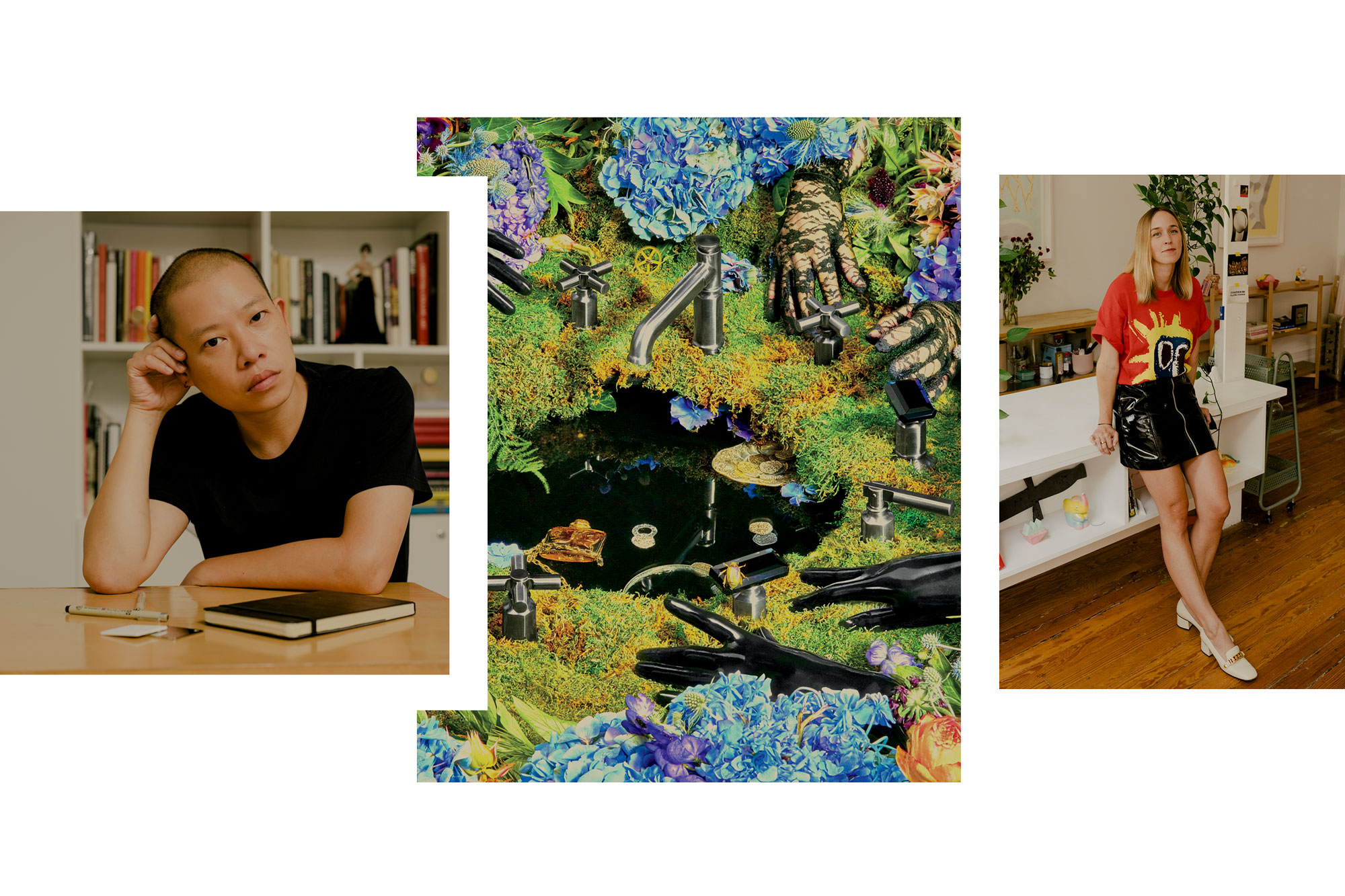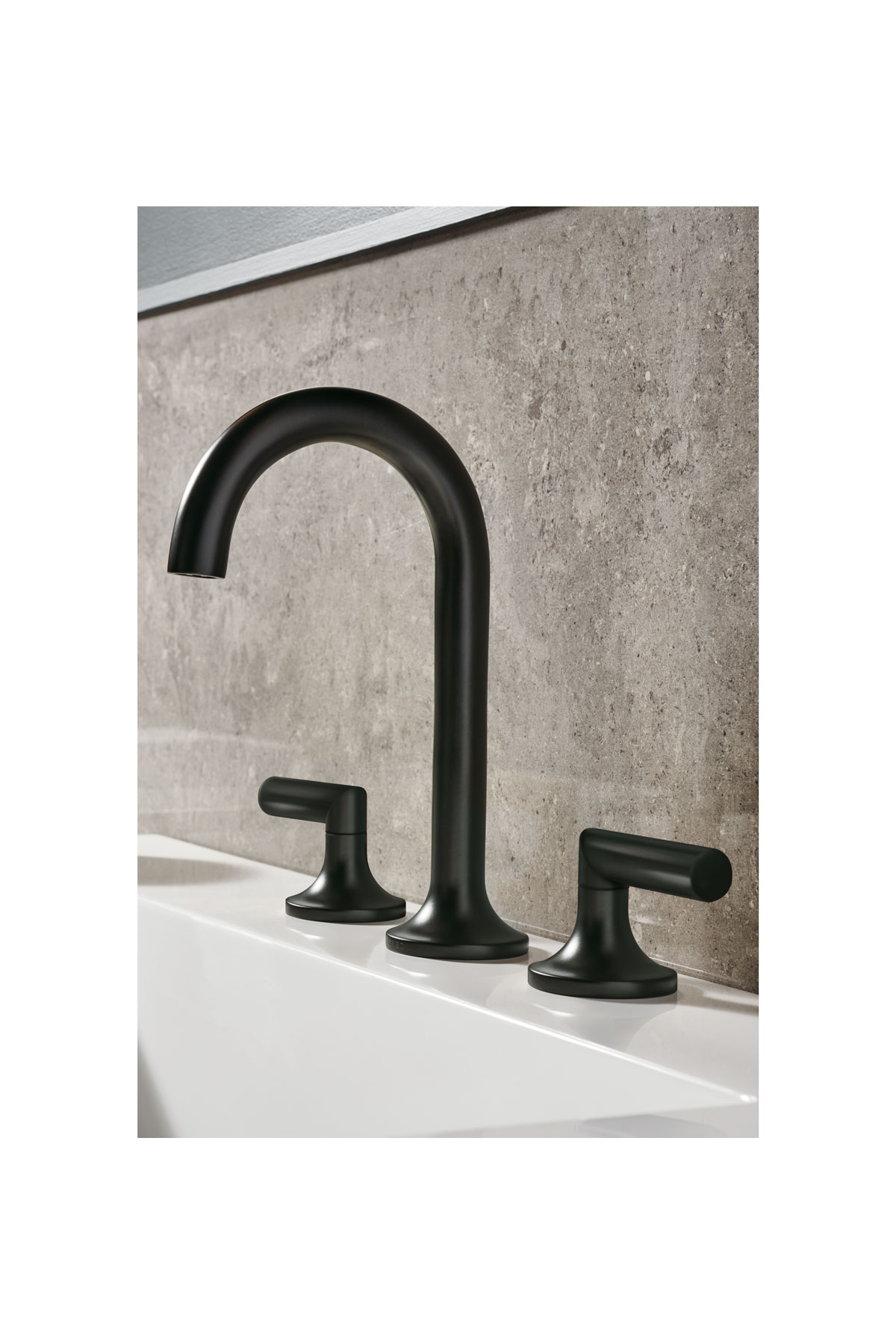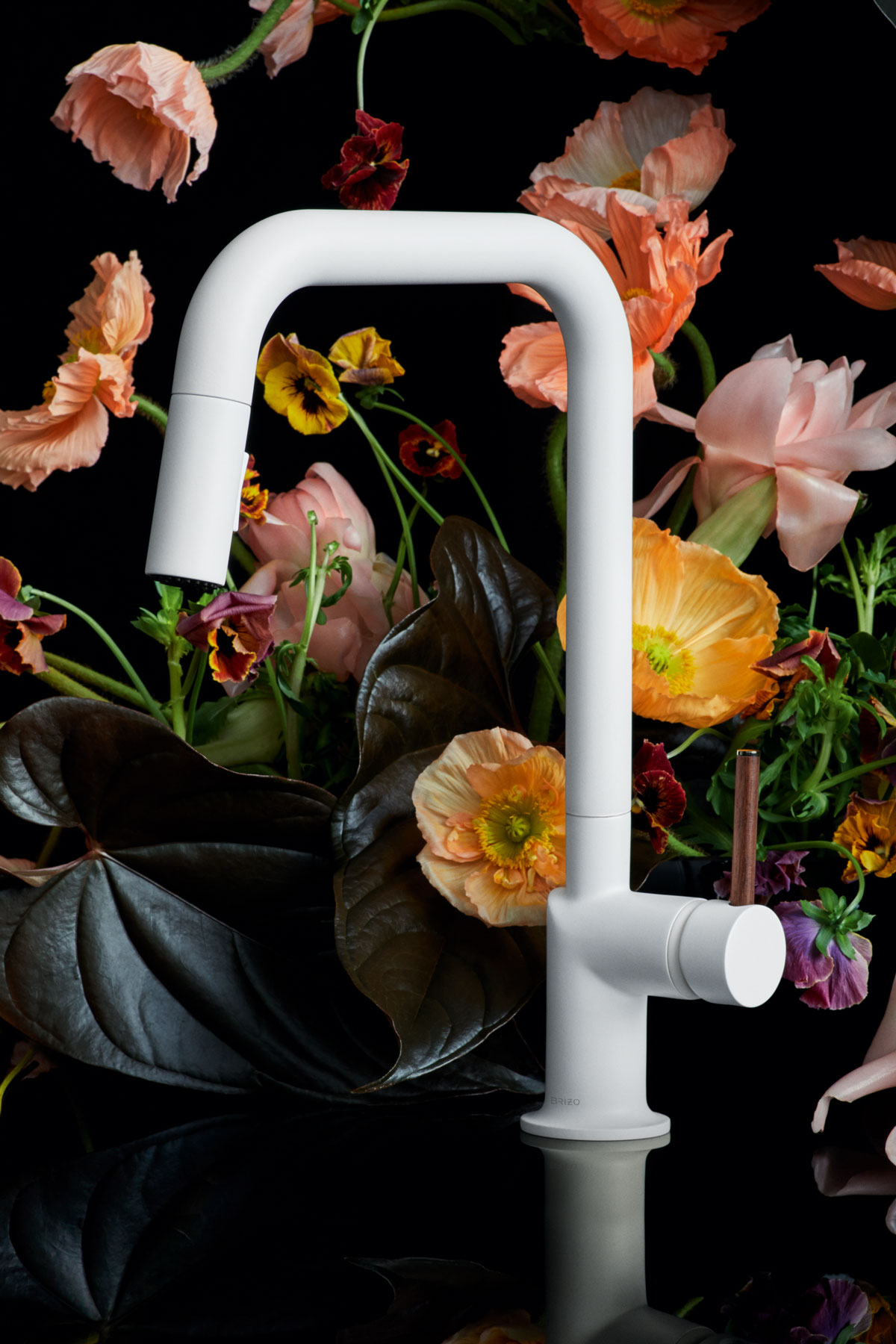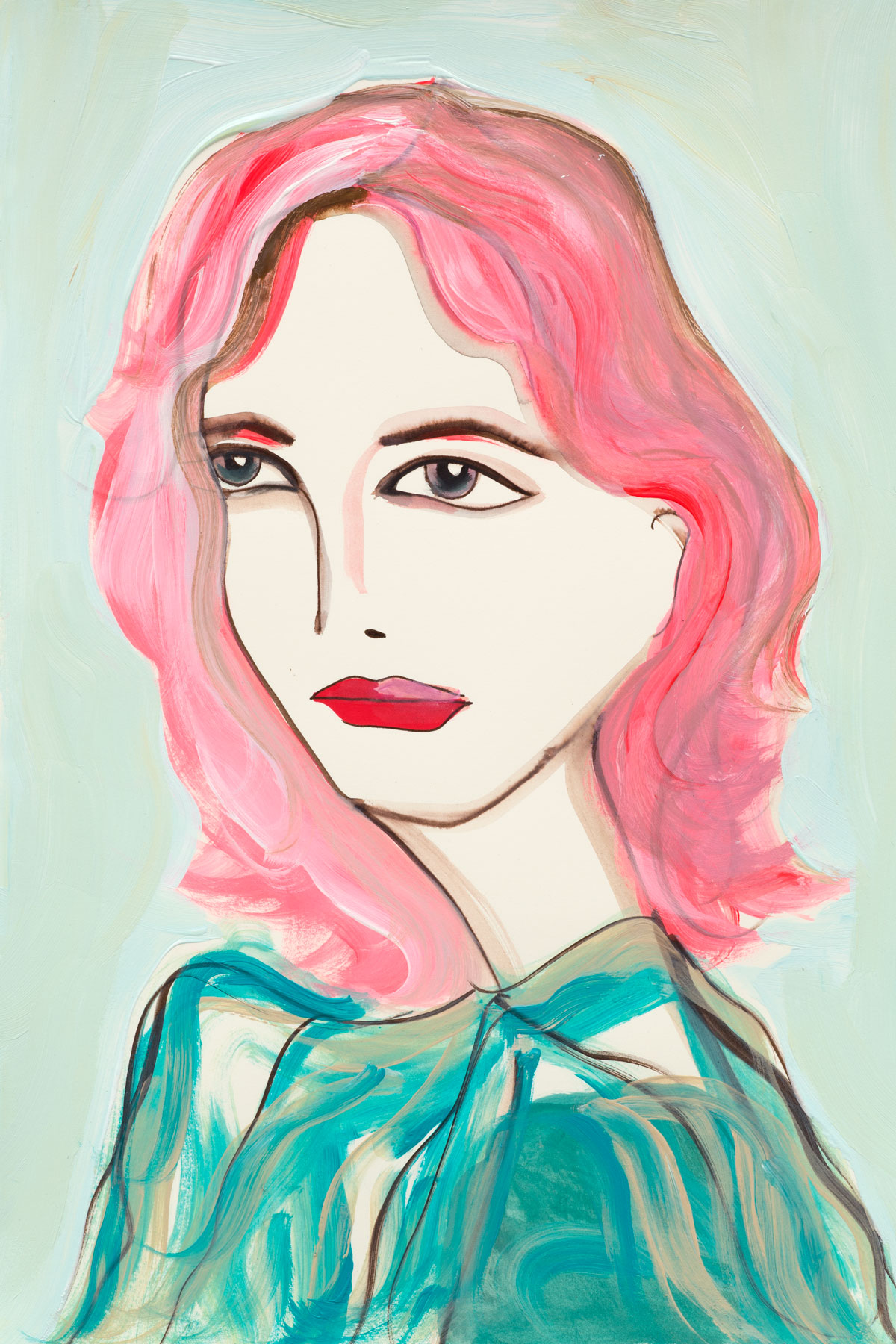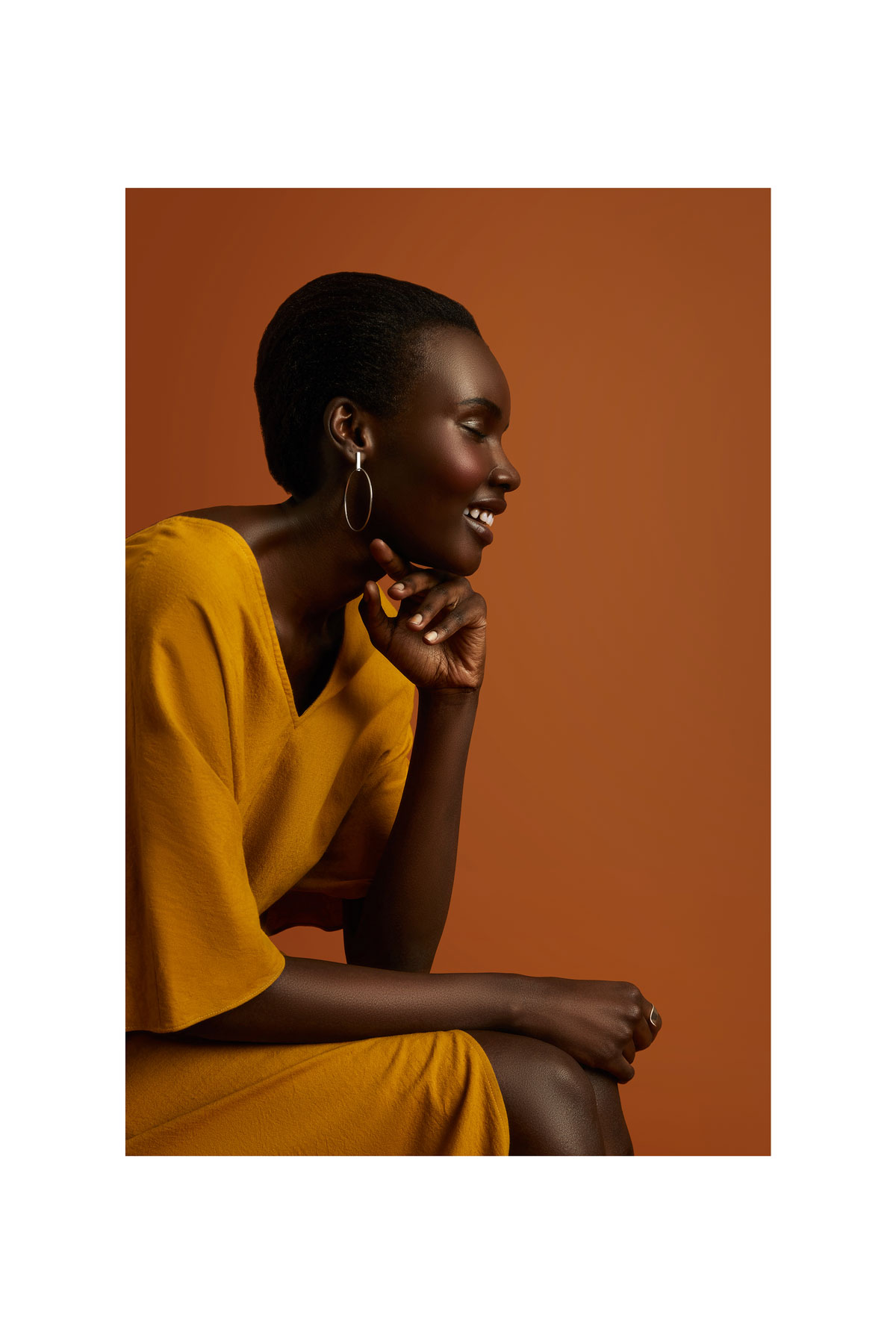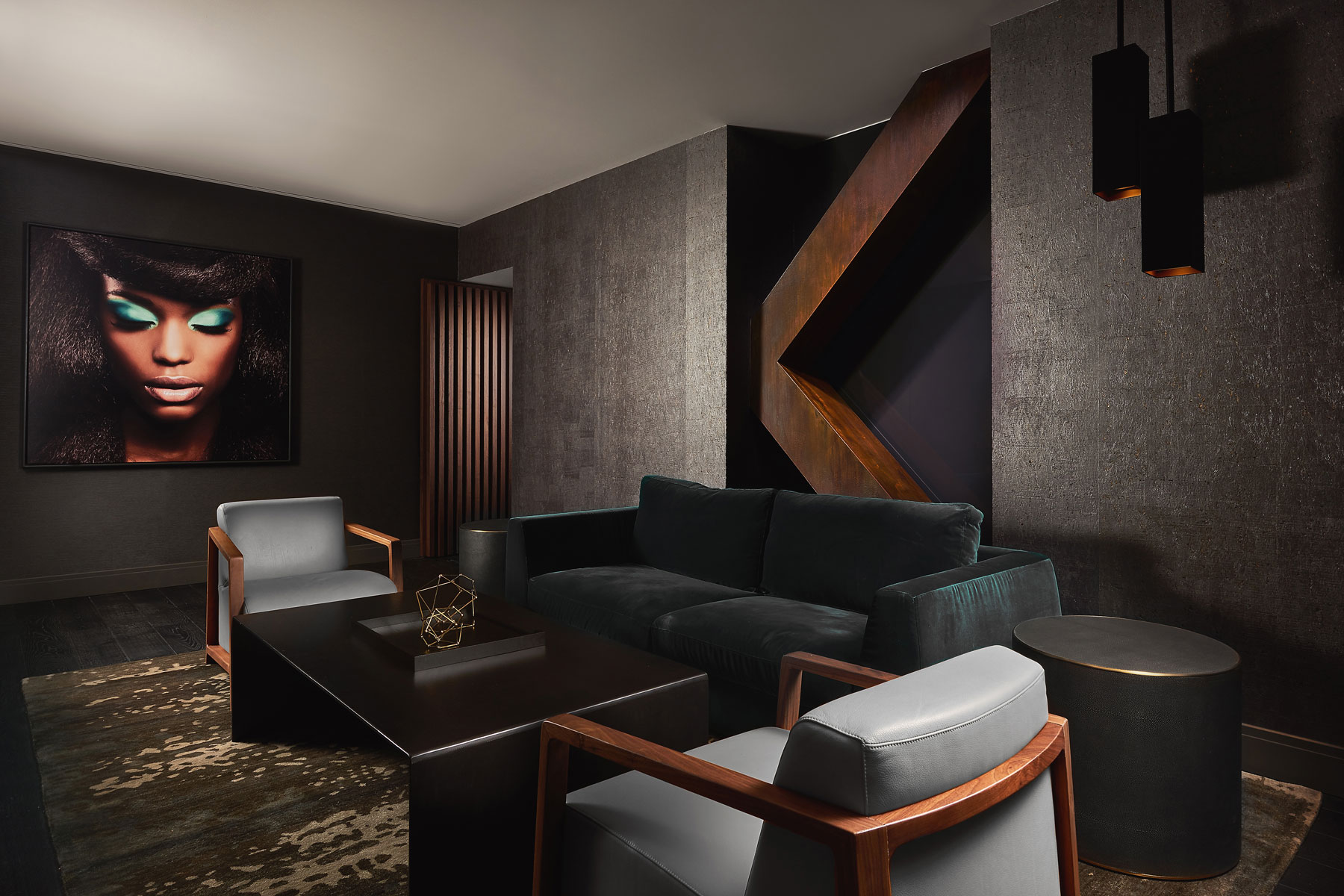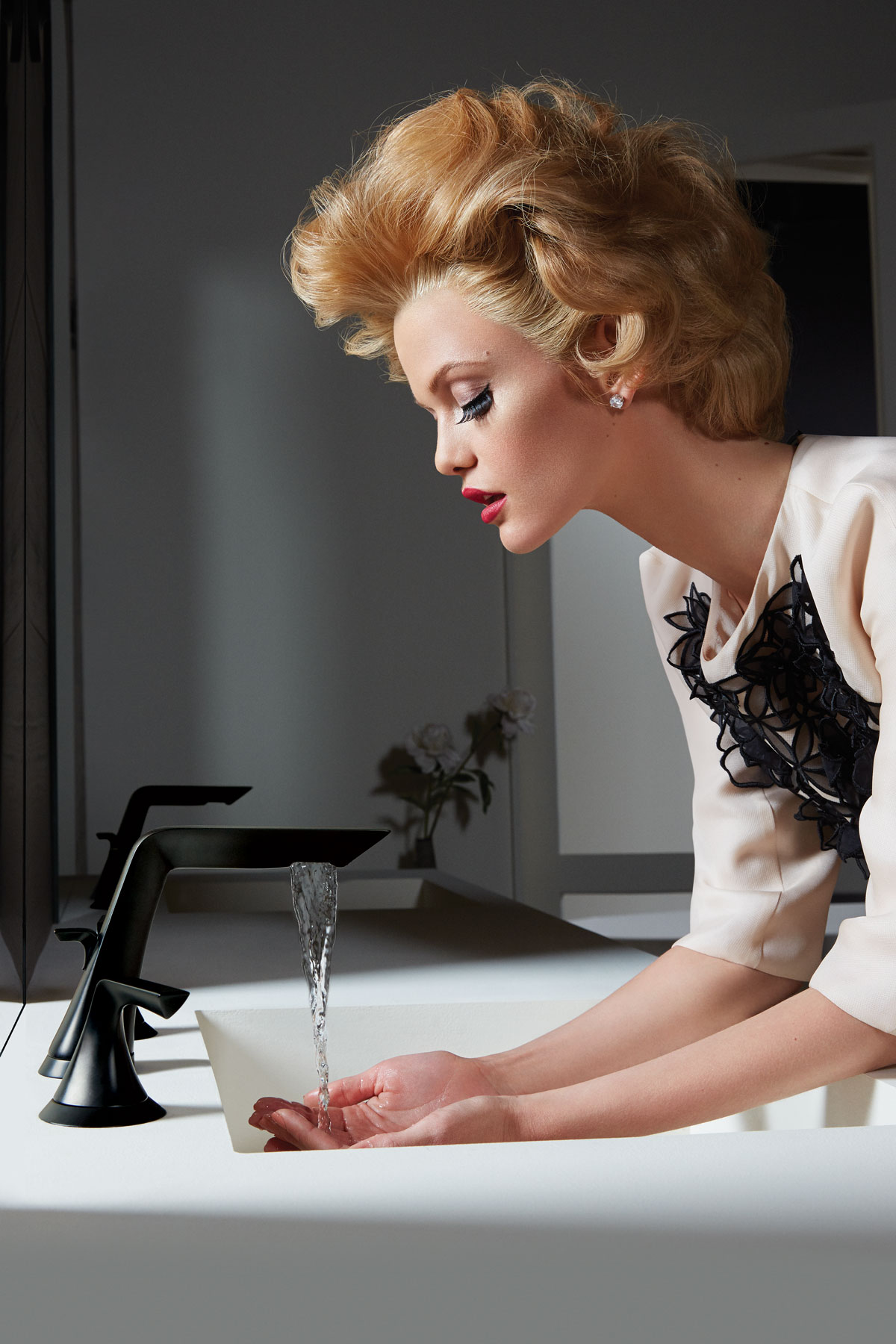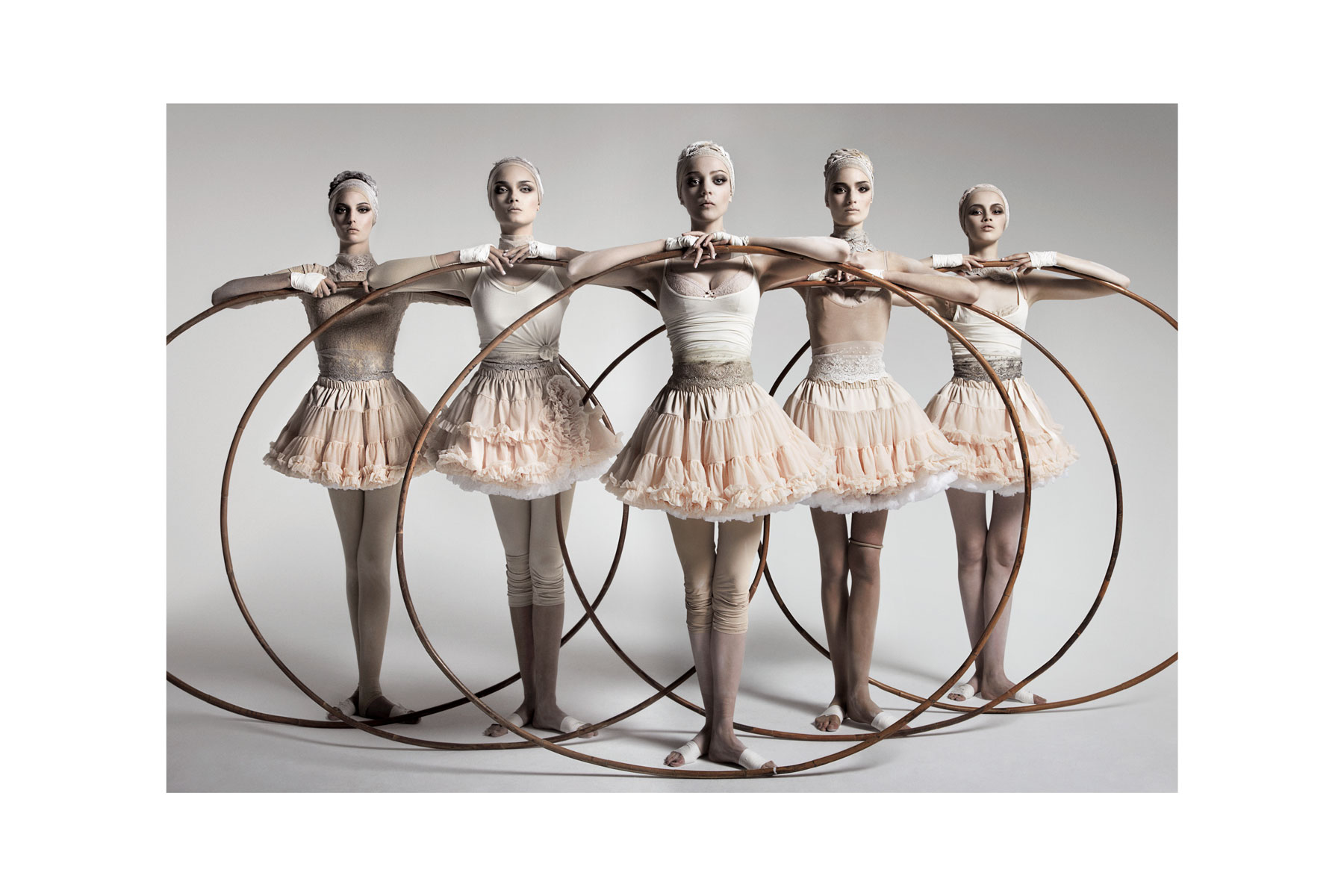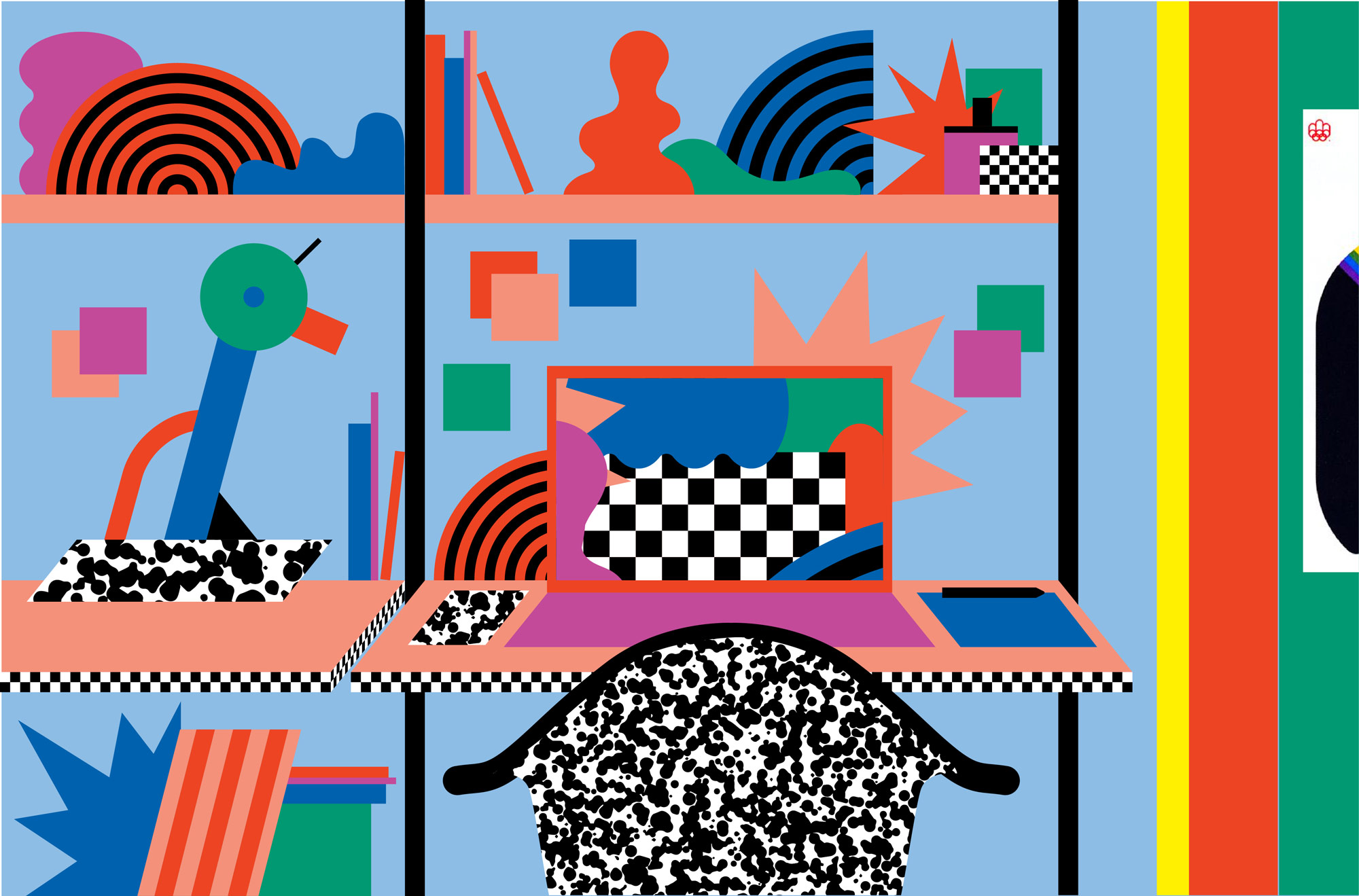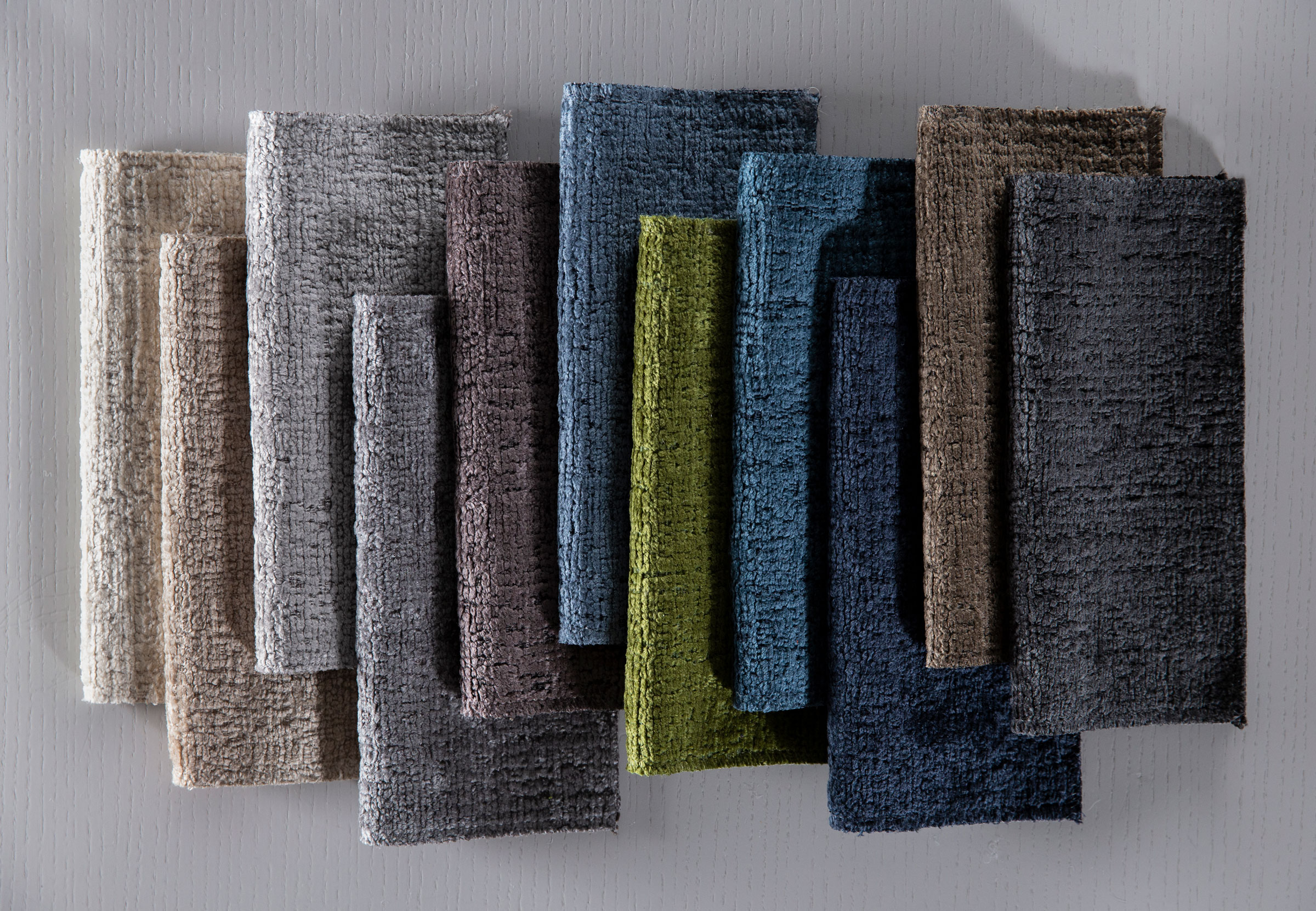The drape of fabric, sheen, texture—fashion elements like these show up in designs that go beyond clothing. Some of the best designers working today say researching across mediums keeps design interesting, and fashion is a top influence in works that span from packaging to faucet design.
Just look at the Invari Bath Collection by Brizo®. The design borrows decorative Edwardian influences, as the campaign was styled and shot by Leta Sobierajski and Wade Jeffree using ornate floral sets with subtle “made you look” details like a black lace glove.
Fashion is everywhere, from finishes to photography to interior design. “Within creative circles so many things are interrelated, and we’re all inspired by what each other does,” says famous fashion designer Jason Wu, one of four creatives we recently talked to about how fashion influences their work.
Here’s more of what Jason and others had to say.
Jason Wu
Artist and Fashion Designer, New York City
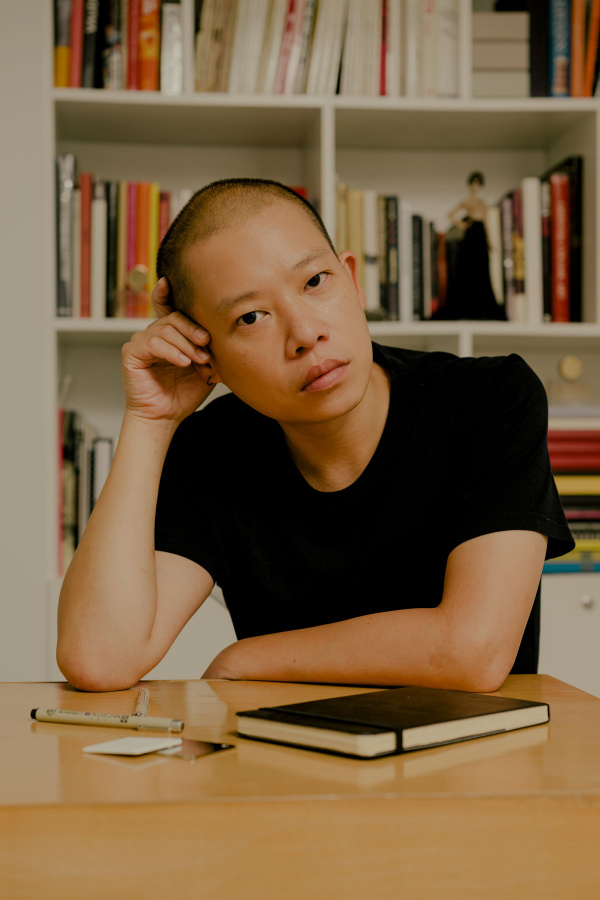
Known for his fashion designs, Jason Wu has branched far from the fashion sphere, designing kitchen and bath collections with Brizo and more. Photo by Daniel Dorsa
A Lead toy sewing machine from the 1920s or ’30s started fashion designer Jason Wu on his journey when he was a teen. “It’s a really beautiful object that set the path for me wanting to become a fashion designer,” he says.
The gift from his father still sits in his Garment District office. Now 38, Jason can and does design anything—dresses for Michelle Obama, dolls for family-owned Integrity Toys, kitchen and bath collections for Brizo.
The latter he’s worked with for more than a decade, even to raised eyebrows from other designers, but his vision was clear. “My work with Brizo has been pretty instinctual. The Matte Black (bath collection finish) was my first idea and the idea we landed on. The Matte White finish (pictured) was my initial plan for the kitchen collection and also where we landed.”
Launched in August 2020, the Jason Wu for Brizo™ Kitchen Collection has a signature Matte White finish, a complement to the Matte Black finish in the 2012 Jason Wu for Brizo Bath Collection. The Matte Black finish was unusual for its time, but now it’s everywhere. “I call that the little black dress of faucets.”
- Photo courtesy of Brizo
- The Matte White finish was Jason Wu’s first instinct for the kitchen collection and ended up as the final design. Photo courtesy of Brizo
Elizabeth Dilk
Art Director, New York City

Elizabeth Dilk’s latest branding project was inspired by lettering she saw in a French film. Photo by Daniel Dorsa
Elizabeth Dilk is a storyteller, whether she’s crafting an ad for Nordstrom, art directing a music video, or designing a logo.
She recently worked with beauty brand Virtue, taking inspiration for the logo from lettering she found in a French film. She may not remember the film’s name, but it was enough to make her pause for a screen grab so she could redraw it. “It’s an elegant serif, and the cues to more archetypal fashion lettering were all there,” she says.
She was also influenced by the paintings and illustrations of artist, designer, and fashion illustrator Tanya Ling, who was hired to create portraits for Virtue. “She has such a cool, fluid tactile style when it comes to rendering women, and knowing we wanted to show a huge range of hair diversity, we thought her hand would be amazing at rendering tons of different types of hair. Her palette is also really elevated and unique and really worked well with the palette I developed for the brand and packaging—natural tones mixed with bright, completely unnatural colors.”
- Illustration by Tanya Ling for Virtue
- Alice Gao for Par en Par
Sonya Haffey
Interior Designer, West Palm Beach, FL
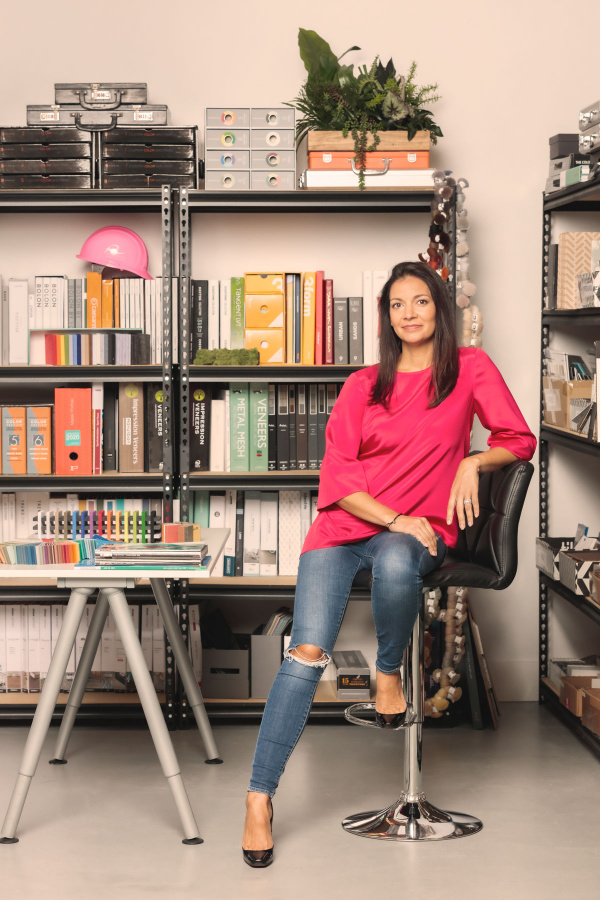
Sonya Haffey says fashion plays a big role in her interior design practice—magazines are often the first place she goes for inspiration. Photo by Ryan Loco
Elegant gold leaf, delicate pink, and deep green speak to interior designer Sonya Haffey from “Pedal Back,” a painting by Tampa artist Stephanie Ong. As V Starr Interiors vice president, Sonya often finds herself going back to Stephanie’s work, using her paintings on paper as inspiration for her own interior design projects. “She does an amazing job with color, and she always tells a story in her art,” Sonya says. “That’s how our projects work, too.”
Works like these as well as paint and fabric swatches show up on mood boards at V Starr, Venus Williams’ interior design company known for making luxury spaces. Sonya spends a lot of time flipping through the latest magazines for color inspiration and trends, pulling a ruffle here or geometric pattern there. “We’re constantly going back to that concept board and asking, ‘Does this tie in with what we were thinking?’ All sorts of things inspire us, but definitely fashion is one of them.”
- The deep green and hint of gold that inspires Sonya Haffey come out in this V Starr-design interior. Photo courtesy of V Starr Interiors
- V Starr has designed many luxury projects, including West Half in DC, pictured here with Brizo fittings. “I love working with Brizo because they think outside of the box. They are the only plumbing company I can think of who collaborated with a fashion designer.” Photo courtesy of V Starr Interiors
Greg Lotus
Photographer, Los Angeles
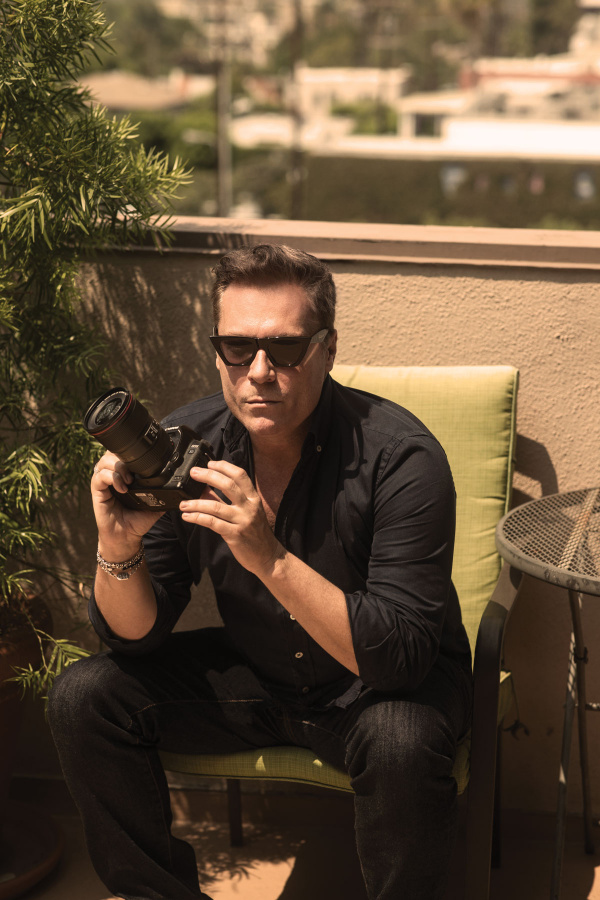
Greg Lotus has a flair for glamour. Whether he’s shooting for Vogue or Brizo, he’s always looking to bring a sense of elegance to his work. Photo by Greg Lotus
Flapper fashion documented in dramatic lighting inspired by turn-of-the-century theater sets the stage for artists like Vogue photographer Greg Lotus. “There is this famous black and white photo from the ’20s from Penn Station where people are waiting for the trains, all wearing the fashions of the time—Coco Chanel, you name it. You could see the beams of evening sun shooting through the dusty building. That really struck me,” Greg says.
He’s shot covers for Vanity Fair, GQ, and others, and he’s always looking for glamour. Photography, like cinematography, he says, has a lot to do with lights. “Lighting is very important because you can see the layers of a picture. The shadows, the light, how it changes things, it has to be the starting point.”
When it came to shooting the Sotria Bath Collection by Brizo, Greg had to get creative. The team wanted a fashion model in the shoot to make an ordinary moment extraordinary.
- “I wanted her doing something—the dishes or washing her face,” Greg says, but he couldn’t get the lighting right at the sink. “A mirror was interfering, so I took it down and cut a hole there. We put a light behind the wall to shine through and hit her face. That’s why you see the side profile. I shot it that way so you wouldn’t see the hole in the wall.” Photo by Greg Lotus
- Beauty Hoops by Greg Lotus
A version of this article originally appeared in Sixtysix Issue 05 with the headline “The Influence of Fashion.” Subscribe today.
